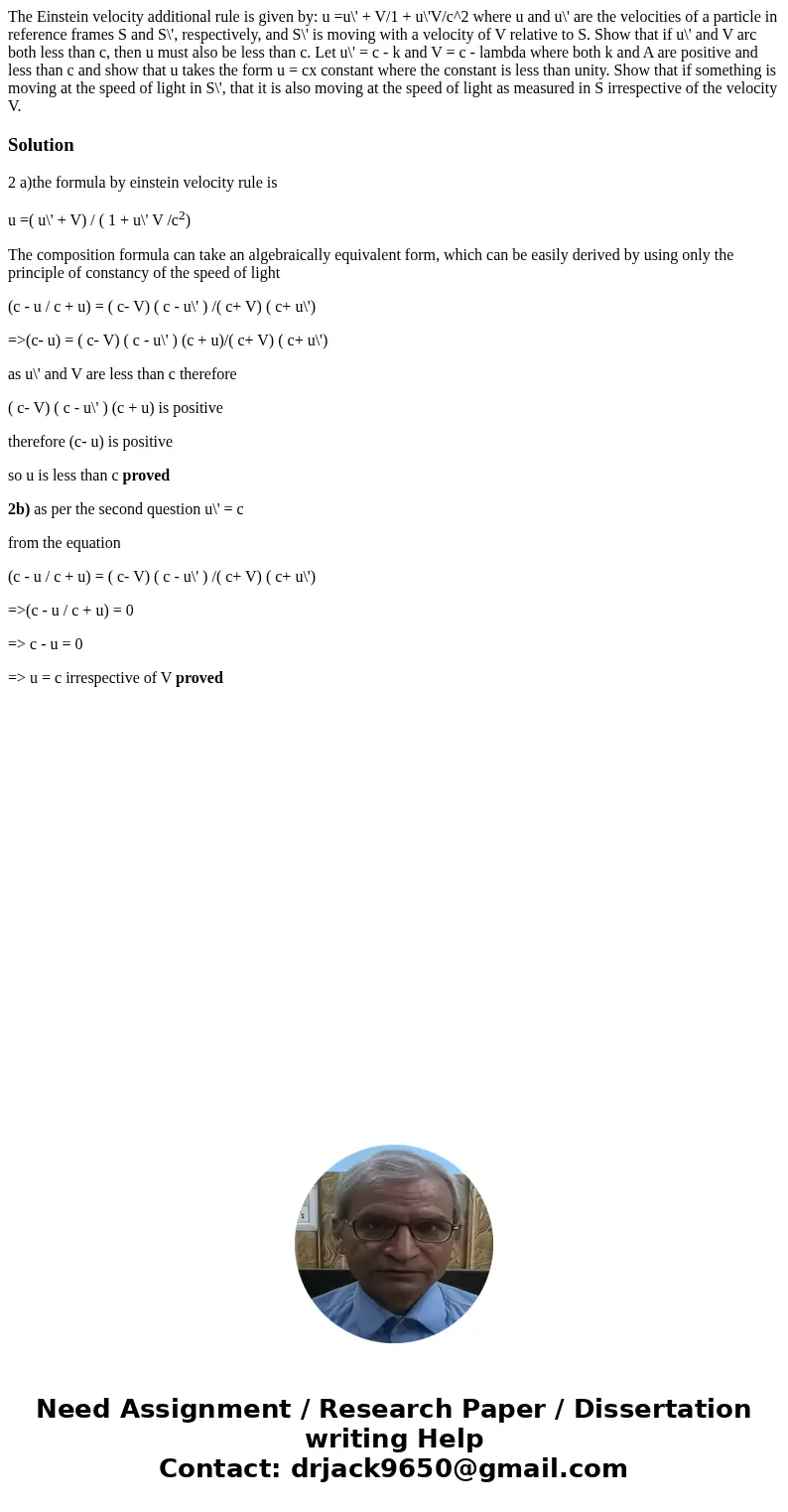The Einstein velocity additional rule is given by u u V1 u
The Einstein velocity additional rule is given by: u =u\' + V/1 + u\'V/c^2 where u and u\' are the velocities of a particle in reference frames S and S\', respectively, and S\' is moving with a velocity of V relative to S. Show that if u\' and V arc both less than c, then u must also be less than c. Let u\' = c - k and V = c - lambda where both k and A are positive and less than c and show that u takes the form u = cx constant where the constant is less than unity. Show that if something is moving at the speed of light in S\', that it is also moving at the speed of light as measured in S irrespective of the velocity V. 
Solution
2 a)the formula by einstein velocity rule is
u =( u\' + V) / ( 1 + u\' V /c2)
The composition formula can take an algebraically equivalent form, which can be easily derived by using only the principle of constancy of the speed of light
(c - u / c + u) = ( c- V) ( c - u\' ) /( c+ V) ( c+ u\')
=>(c- u) = ( c- V) ( c - u\' ) (c + u)/( c+ V) ( c+ u\')
as u\' and V are less than c therefore
( c- V) ( c - u\' ) (c + u) is positive
therefore (c- u) is positive
so u is less than c proved
2b) as per the second question u\' = c
from the equation
(c - u / c + u) = ( c- V) ( c - u\' ) /( c+ V) ( c+ u\')
=>(c - u / c + u) = 0
=> c - u = 0
=> u = c irrespective of V proved

 Homework Sourse
Homework Sourse